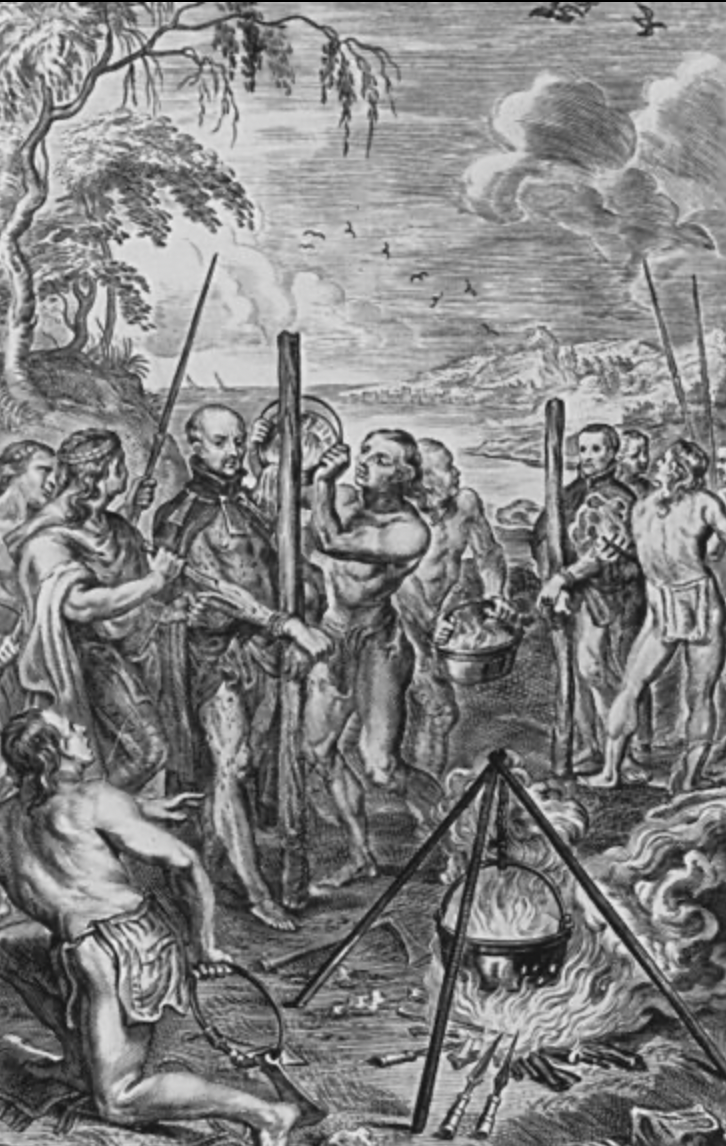St. John de Brébeuf’s Vision at Niagara Falls: A Moment of Faith on the Edge of a New World
Long before modern cities, highways, or the border between the U.S. and Canada, the land around Niagara Falls was wild and untamed. The powerful Falls thundered as they still do, but the world around them was very different. It was into this raw, beautiful, and dangerous land that a French Jesuit priest named John de Brébeuf arrived in the early 1600s.
The World at That Time
In the 1600s, North America was not yet the United States or Canada. It was a vast continent of Indigenous nations—like the Huron-Wendat, Haudenosaunee (Iroquois), Algonquin, and many others—each with rich cultures, languages, and histories. European powers were just beginning to explore and colonize parts of the continent:
France controlled parts of what is now eastern Canada and called it New France.
Britain had settlements farther south, such as in Virginia and Massachusetts.
The Dutch and Spanish also claimed parts of the Americas.
European settlers brought with them disease, religion, and ambition—changing life for Indigenous peoples forever.
Who Was St. John de Brébeuf?
Born in France in 1593, Brébeuf was a well-educated Jesuit priest. In 1625, he was sent to New France as a missionary. He lived among the Huron-Wendat people, near present-day Ontario, and dedicated himself to learning their language and customs.
Unlike many colonists, Brébeuf showed respect for the people he hoped to convert. He didn’t try to force change; instead, he lived humbly, endured hardship, and sought to understand. He wrote the first Huron-French dictionary and helped translate prayers and teachings.
But his mission came with danger. The Huron were caught in conflict with the powerful Iroquois Confederacy (Haudenosaunee), who saw the French as enemies.
🌈 The Vision at Niagara Falls
According to tradition, sometime during his travels near the Great Lakes, Brébeuf stood near Niagara Falls and had a powerful vision:
He saw a giant cross in the sky, stretching across the land.
This wasn’t just a religious symbol—it was a sign of struggle, sacrifice, and a calling. He later said it meant he was being shown the suffering he and others would endure to share their faith. But it also gave him strength to carry on.
The story of St. John de Brébeuf’s vision at Niagara Falls—where he reportedly saw a great cross stretching across the land—comes from 19th-century accounts like Frank H. Severance’s Old Trails on the Niagara Frontier, which recounts this moment of spiritual insight and its symbolic connection to Brébeuf’s missionary calling.
His Martyrdom
In 1649, during a time of intense warfare between Indigenous nations, Brébeuf and fellow priest Gabriel Lalemant were captured by the Iroquois. They were tortured and killed near present-day Midland, Ontario. Brébeuf was 56.
Though tragic, his death was seen as heroic by the Church, and he was later canonized as a saint in 1930. His feast day is celebrated on October 19.
We know the details of St. John de Brébeuf’s martyrdom from firsthand Jesuit accounts, especially the Jesuit Relations—a series of annual reports written by French Jesuit missionaries in New France (Canada) from 1632 to 1673.
In March 1649, at the Huron mission of Saint-Ignace near present-day Midland, Ontario, Jean de Brébeuf and Gabriel Lalemant were captured by Iroquois warriors. They stood firm in their faith as they faced brutal torture—boiling water poured over them in mockery of baptism, and their flesh flayed in a ritual of fire and pain.
Why It Matters
Brébeuf’s story is about more than religion. It’s about:
Living with purpose in an uncertain world.
Respecting cultures different from your own.
Standing firm in your beliefs, even when it’s dangerous.
And his vision at Niagara Falls reminds us that moments of clarity and meaning can come in the wildest, most overwhelming places.
The nearby Catholic Church, t. Mary of the Cataract, features mosaics of North American saints—including a depiction of St. John de Brébeuf. These mosaic panels are located in the ceiling rondelles (circular insets) among other saintly figures, celebrating Catholic heritage across the continent
🕊️ Next Time You Visit Niagara Falls…
Look past the gift shops and crowds. Find a quiet spot near the edge of the Falls. Imagine the land without borders. The sky, the spray, the roar. And think of Brébeuf—alone, in prayer, seeing something greater than himself.
That’s the spirit of this place. That’s the power of the Falls.


